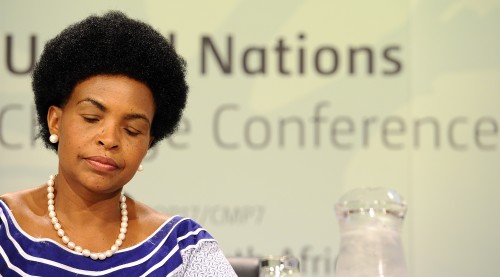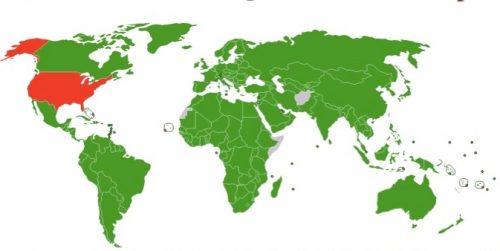We’re Brooklyn-based green builders dedicated to turning our local neighborhood green, but we’re always following the latest developments in global standards for more sustainable living.
The United Nations Framework Convention on Climate Change (UNFCCC) met in Durban over the past two months in order to hammer out a plan for extending the Kyoto Protocol. The UNFCC is the body of the UN that is in charge of pulling together all the countries under one unified agreement on how to handle important climate issues. Getting 194 nations to agree is no small task.
Stressed out: Conference President Maite Nkoana-Mashabane of South Africa
The main focus of this year’s talks was to establish a binding agreement that would build upon the Kyoto Protocol by applying the same emission limits to all nations regardless of industrialization. The U.K., for example, would be held to the same standard as India, even though the U.K. is highly developed with a high average standard of living–in contrast with India, where hundreds of millions still live in poverty.
The greatest conflict erupted between the E.U. and India, due to the E.U.’s determination to lay out a “road map” for a legally binding agreement for all nations. Developing industrial powers led by India and China argued fiercely against what they saw as an unfair constraint on projects that would improve standards of living nationwide.
They make a compelling argument: first world nations achieved their high standards of living through decades of environmentally damaging industrialization, so why should rising nations have to pay the price through limits on their own development? India, especially, refused to sign off on an as-yet-undefined “road map” that they viewed as signing away their future development rights.
The Kyoto Protocol, first established in 1997, was a global agreement to limit emissions in the interest of sustainability. 191 nations have signed it so far, but the U.S. is still holding out because we refuse to accept the point that nations are held to different emissions criteria depending on development status.
Grey: undecided nations/Red: nations with no intention of ratifying.
The U.S., as the only major power not bound by the Kyoto Protocol, stayed mostly quiet in the Durban brawl but will add a third dimension to finalizing an equally binding agreement. Did we refuse to ratify the Kyoto Protocol because we didn’t want to be held to different standards than developing nations, or because we didn’t want to be bound at all? Will we throw around our economic and political clout in further attempts to avoid emissions regulations? Will the agreement conceptualized in Durban become a reality?
So, what was really accomplished on Sunday? Not much, according to most commentators. It’d be easy to bash the agreement as an inadequate solution, but let’s focus on the hard-won victories:
1. Compromise was achieved between the E.U. and India/China. All nations agreed for a legally binding framework to be completed by 2015 and implemented by 2020.
2. There’s a definite timeline: work on the new agreement will start next year.
3. Nations confirmed the Green Climate Fund, which was first agreed on in Copenhagen in 2009. An as yet undetermined body under the U.N. will oversee the fund, which is to provide $100 billion a year by 2020 to help developing nations adapt to problems posed by climate change. The exact terms for the fund remain vague, with no definite plan on where the money is to come from or how much is already in the fund.
Our dream is to turn New York green, one brownstone at a time, so we understand the necessity of taking very small steps to achieve a greater goal, but the talks’ tendency toward compromise and vague planning represent procrastination rather than progress. But still, I guess it’s a good thing that the climate conversation is still grinding on, one year at a time.



